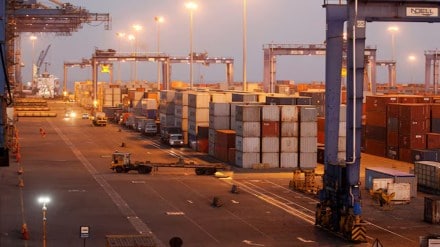When global trade faces headwinds and protectionism is gaining ground, the big question is whether India should reconsider its decision to not be a part of the prosperous and bustling Regional Comprehensive Economic Partnership (RCEP). Five years ago, India opted out of this grouping — comprising 10 members of the Association of Southeast Asian Nations together with China, Japan, South Korea, Australia, and New Zealand — at literally the eleventh hour citing unmet “significant outstanding issues”. These had a good deal to do with China, the most powerful economy in RCEP, well before the tense stand-off on the Sino-Indian border began in April 2020. In a departure from the government’s stated position, BVR Subrahmanyam, CEO of Niti Aayog, argues that we should join this grouping as India has not so far captured the China Plus One opportunity. Donald Trump, who is now US president-elect, is bound to exert pressure on the country to bring down tariffs and provide increased market access, including for farm produce. To benefit from global trade opportunities, India must therefore lower its high average tariffs for industrial and farm goods that have significantly risen in recent years.
The question of joining RCEP must be viewed in the context of the government reviewing big free trade agreements (FTAs) signed in the past and putting in place standard operating procedures to negotiate future deals. As far as RCEP is concerned, it bears mention that India was closely involved in eight years of hard negotiations to form the grouping. When the National Democratic Alliance regime came to power 10 years ago, it decided to remain engaged with these negotiations and sought to join RCEP even when it was deeply concerned about the outcomes of three existing FTAs with its East Asian partners as it felt it gained less than them. Furthermore, throughout the RCEP negotiations, “the government appeared oblivious to the travails of several manufacturing industries which were ill-prepared to face competition from the East Asian region, especially China”, as has been pointed out in a recent column in this newspaper. What forced the government’s hand to opt out was opposition from domestic stakeholders like India Inc and the dairy industry.
Reconsidering the earlier decision to exit RCEP certainly merits consideration if there is a change of heart among domestic stakeholders. Joining makes sense only if they are consulted and taken on board. In this regard, there is a consistency in Subrahmanyam’s views as during his earlier stint as commerce secretary he urged India Inc to brace for competition as the country was going to sign “very deep” FTAs in the future. Apex chambers like CII and FICCI, for their part, have signalled a willingness to embrace such deep FTAs provided their interests are safeguarded and there’s a level playing field. If much smaller neighbouring countries like Bangladesh, Sri Lanka, and the Maldives have expressed an interest to join RCEP, why cannot India do so as well to benefit from greater trade, investments, and GDP growth? Comfort levels of dealing with a Sino-centric grouping would of course be higher if the disengagement on the border leads to de-escalation and de-induction of troops. Only then can closer bilateral ties resume with India becoming more open to Chinese investments and supply chains emanating from the mainland. Being part of RCEP would also strongly signal India’s ambitions to engage the Indo-Pacific region, a strategy that is currently only a work in progress.
